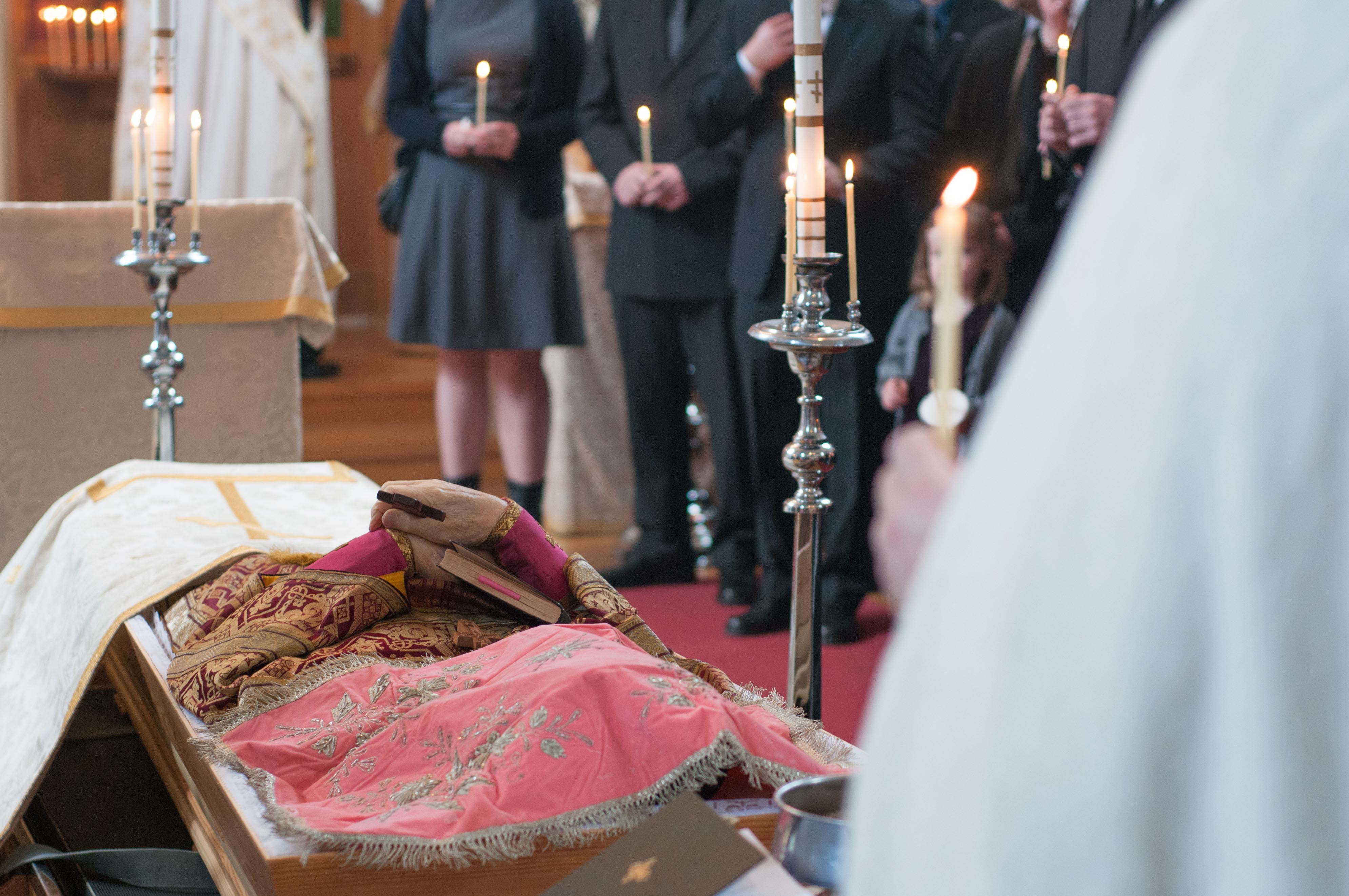
When a Loved One Dies
When a relative or loved one dies, the parish is there to help you to lay them to rest. In the event of death, please contact the parish’s on-duty priest as soon as possible to discuss the memorial and burial service. The priest will also give you advice on practical matters. The burial is always performed according to the religion of the deceased, and it should be done as soon as possible after death. The on-duty priest is happy to advise you on the burial of a member of the Orthodox Church.
On-duty priest -> (link to Finnish website) (linkki vie suomenkielisille sivuille)
Swedish-speaking priests of the parish ->
Performing the Memorial Service (Panikhida) Before Burial
A memorial service, also called the Panikhida, may be performed on behalf of the immortal soul of the deceased. Through prayer, members of the parish ask God to take the departed into the Kingdom of Heaven and to forgive any sins that they may have committed while alive, either deliberately or unwittingly. The priest, bishop or deacon holds a censer during the service. The people taking part in the Panikhida carry long, thin votive candles, which symbolize prayer.
Traditionally, the memorial service is held either on the day of death, on the third day after death, on the fortieth day after death, or one year after death. In addition to these dates, general commemoration services are held during the liturgical year for everyone who has lost a relative or loved one.
Time of the Burial
The burial of the departed should not be delayed unnecessarily. According to Orthodox tradition, the burial should be performed on the third day after death. The Panikhida should be held at least on this day. Burial services are performed every day of the week, excluding Sundays.
A proper memorial service may be held also in connection with the forty-day Panikhida.
The Burial Service – from Death to Eternal Life
The reality of Easter and the hope imparted by the resurrection of Christ are strongly present at the burial service. Death is not the end, but rather a transition towards eternal life. The liturgical color for the burial service is white, similar to the Easter season.
Before blessing the body, the casket is placed in the center of the church, with the departed facing the altar. An icon of Christ may be placed on the chest of the departed, which is buried with them. A ribbon is placed on the forehead of the deceased, symbolizing the heavenly wreath of victory. The departed is dressed in their best clothing. Members of the procession carry long, thin votive candles with them during the ceremony. According to Orthodox tradition, the casket is kept open, unless there is a particular reason to keep it closed.
Bidding Farewell to the Deceased
About halfway through the service, the priest urges the willing to say goodbye to the departed before their open casket. When bidding farewell, you can make the sign of the cross over the deceased to bless them, kiss the icon placed on their chest, kiss the departed, touch their hand or cheek, or just bow before the casket. After this, a cloth is placed on the face of the departed. The priest uses consecrated dust to draw a cross on the chest of the deceased as a reminder that the human body has come from the ground and dust.
The Orthodox Church favors the traditional casket burial.
Practical matters
When a relative or loved one dies, please contact the parish’s on-duty priest as soon as possible.
The Panikhida (memorial service for the deceased) may be performed immediately on the day of death.
Burial services are performed every day of the week, excluding Sundays.
According to Orthodox tradition, the casket is kept open during the burial service.
The registered members of the parish are entitled to a place at Parish cemetery and the services of the Priest.

 Päivän sana
Päivän sana  Päivän pyhät
Päivän pyhät 